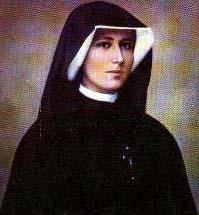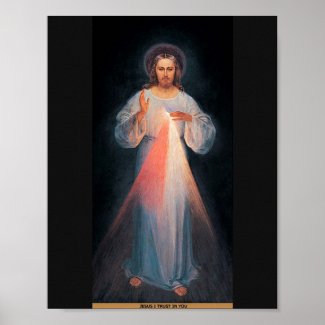
During the centuries of 1550 to 1850 France would undergo what would become known in history as the 'little ice age'. This would also bring major economic problems to the infrastructure of France, and its ability to grow produce in its agricultural provinces.
The bitter frost and winds destroyed crops and made any farming difficult, which then brought much hardship to all in France, as many were dependent upon the land to earn their living.
The weather would not be the only problem for France as its government embarked on a series of wars, which expanded its territory, especially when France intervened in what would be known as 'the thirty year war'.
But, it would be under the leadership of King Louis XlV that France would become one centralised Government, even though it would be riddled with internal divisions for many years to come.
Into this seething political hotbed that was France would come a daughter of the Church, Margaret Mary who was born in the year 1647. Both her parents, Claude Alacoque and his wife Philiberte, were overjoyed at their latest arrival who would join her four other siblings.
The Alacoque family were known for their piety and both parents faithfully instructed all their children on the Church's Teaching. Margaret Mary would prove to be an apt pupil as she listened intently to her parents, and through their guidance Margaret Mary grew in fervour as she longed to receive Communion. But sadness touched the family when her Father died in 1755; Philiberte was distraught at losing her beloved Claude.
So it was decided to send Margaret Mary to the Urbanist Nuns at Charolles, where she stayed for the next 2 years to receive further instruction on the Faith, and to further her education. Because of the good grounding she had received from her parents Margaret was able to partake of Holy Communion at the young age of nine.
But it was after this that a strange malady struck Margaret Mary and she was unable to remain with the nuns as her condition worsened and she became bed ridden. Upon her return home her family was worried for her and wondered if their beloved Margaret would ever walk again. So they along with Margaret Mary began a prayer vigil, and it was when Margaret consecrated herself to the Blessed Mother, that she was miraculously healed.
Margaret Mary attributed her healing to the intervention of the Blessed Mother and vowed to become a Religious herself, for Margaret had longed for this, even at the early age of four.
During all this Philiberte kept up her daughters spirits even though she herself was enduring much stress from inner wrangling with some members of her family. Even though the Alacoque family had been left in good financial circumstances due to her father’s position at court, many members of the family tried to interfere with Philiberte's handling of her children and home. This led to the family being taken advantage of, and Philiberte lost much of her financial independence.
After the family conflict had abated Philiberte tried to marry off her lovely Margaret Mary to a man of substance, and though for a while Margaret immersed herself in society dances and balls she could find no solace in such vanities. So Margaret refused and held fast to her longing to enter the Religious life, for she intended to keep her promise made to the Blessed Mother. It was also during this internal family warfare that Margaret turned increasingly to prayer and spent many hours praying to her beloved Lord and Our Lady, seeking guidance in which direction to take.
It was during this time that Margaret Mary would see a vision of Christ, who appeared before her as if he had been freshly scourged, a most pitiful sight which tore at the young Margaret’s heart. Our Lord rebuked Margaret for forgetting her promise, and this was to touch Margaret’s heart with an inner remorse that would stay with her for life.
So it was that in the year 1671 Margaret Mary entered the Visitation Order situated at Paray and in 1672 Margaret made her final vows. During all this our Lord continued to appear to Margaret Mary, showing through his throbbing and bleeding Heart how much sin grieved Him and his Heavenly Father, and it was through this vision of Christ's most Sacred Heart that a devotion would spring to appease the sins of the world, through this particular devotion of prayer.
These visions of our Lord would also bring much pain to Margaret Mary as many in her community became jealous. Though many were cruel to her, Margaret remained loving and docile, and this won over the hearts of her Superiors and fellow sisters.
It was also through these visions given to Margaret Mary as a Gift from God, that Jesus wished to establish the devotion to His Sacred Heart, by instituting a Holy Hour on the first Friday of each month. For Jesus longed for Reparation from the Faithful when in His hour of need He had been alone, and to afford all those who would keep Him company during this devotion to the Sacred Heart the immensity of His Divine Mercy and Love to Sanctify all who pray in reparation and keep Him company during His agony.
Then in 1675 a holy Priest Claude de la Colombiere was sent to the parish of Paray and became confessor to the Visitation Nuns, which included Sister Margaret Mary. It would be through this young Priest that the devotion to the Sacred Heart of Jesus would be promoted, through his writings.
For both Sister Margaret Mary and Fr. Claude had a devout love for Jesus and longed to keep Him company when he was deserted by all. Through their combined love of God they were to spread this mission and devotion throughout the world and the promises contained for those who follow this devotion to the Sacred Heart of Jesus.
Sister Margaret Mary died in 1690.
St. Margaret Mary was canonised in 1920 by Pope Benedict XV.
These are the twelve promises of Jesus for those devoted to His Sacred Heart.
1: I will give them all the graces necessary for their state of life
2: I will establish peace in their families.
3: I will console them in all their troubles.
4: They shall find in My Heart an assured refuge during life and especially at the hour of their death.
5: I will pour abundant blessings on all their undertakings.
6: Sinners shall find in My Heart the source of an infinite ocean of mercy.
7: Tepid souls shall become fervent.
8: Fervent souls shall speedily rise to great perfection.
9: I will bless the homes where an image of My Heart shall be exposed and honored.
10: I will give to priests the power of touching the most hardened hearts.
11: Those who propagate this devotion shall have their names written in My Heart, never to be effaced.
12: The all-powerful love of My Heart will grant to all those who shall receive Communion on the First Friday of nine consecutive months the grace of final repentance; they shall not die under my displeasure, nor without receiving their Sacraments; My heart shall be their assured refuge at that last hour.













